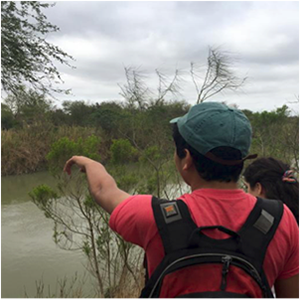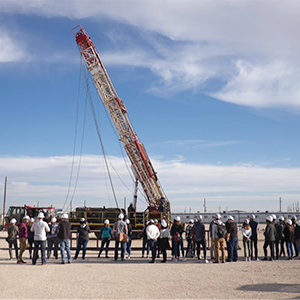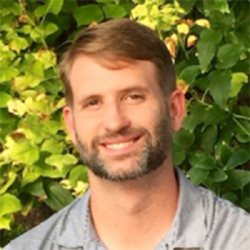 Whether within social media or the news, many of today’s most challenging issues are often boiled down to divisive and oversimplified black and white concepts. Thus, it can be difficult to cover complex topics in classrooms for fear of reproducing these limiting forms of discourse and inquiry. Unfortunately, by avoiding hot-button issues, teachers can miss important opportunities to foster civic engagement, critical thinking, and collaboration—
Whether within social media or the news, many of today’s most challenging issues are often boiled down to divisive and oversimplified black and white concepts. Thus, it can be difficult to cover complex topics in classrooms for fear of reproducing these limiting forms of discourse and inquiry. Unfortunately, by avoiding hot-button issues, teachers can miss important opportunities to foster civic engagement, critical thinking, and collaboration—
essential skills for 21st century leadership.
PBL provides a framework to help shift students away from the prevailing modes of simplistic, divisive thinking, and I have found that travel can be especially helpful in transforming this mindset. During projects on immigration, criminal justice, and energy policy, I have incorporated travel experiences to help students explore the multi-layered nature of some of today’s most challenging, and often, most polarizing issues.
Here are 3 things I’ve learned about traveling in PBL.
Skip the Traditional Field Trip
All communities have their go-to field trip sites (I teach in San Antonio where a high school senior recently told me she has gone on seven field trips to the Alamo). While museums, zoos, and historical sites hold value, the most meaningful student learning often occurs in much different venues.
For example, during a project focused on energy policy, students traveled to Texas’ Permian Basin. While distinctly not a tourist destination, it’s a region responsible for a major percentage of the nation’s energy. On the trip, students visited oil fields, abandoned towns, and wind farms, and they spoke with a variety of people. One student, who held one-sided views before the trip, wrote:
“Traveling somewhere where oil is so heavily depended on has opened my eyes. These are people’s livelihoods and not something their cities and families can give up. This issue is definitely not black or white and people’s lives on both sides are at stake.”
While still believing the US should pursue renewable energy, she gained a fuller understanding of the issue’s complex realities.
In a different project students studied immigration while traveling to the US/Mexico border. There they visited places such as the Rio Grande River at the Santa Ana Wildlife Refuge, McAllen City Hall, a volunteer center, and a section of the border wall. A student recalled the importance of seeing the border in these various forms, writing:
"We are the ones that give it (the border) meaning; otherwise, it would be just another river. There is nothing inherently threatening about it, but the way we treat it creates fear in others. By seeing the border in person I was able to, at least to a certain extent, remove the actual border from the idea of a border that countries have constructed through their discourse."
 The US/Mexico border and the Permian Basin are both sites relatively near our school that helped students challenge deeply held, and often one-sided assumptions. Traveling to these largely unexplored locations aided students in moving away from simplistic binary thinking and invited them to engage with the topic’s actual complexity.
The US/Mexico border and the Permian Basin are both sites relatively near our school that helped students challenge deeply held, and often one-sided assumptions. Traveling to these largely unexplored locations aided students in moving away from simplistic binary thinking and invited them to engage with the topic’s actual complexity.
Students hear from oil field workers and see a completion rig in action. Photo by Jason Reed
Practice Questioning
Travel can create opportunities to listen deeply to a range of first-hand perspectives. For instance, during the border trip, students posed questions to many people including Central Americans seeking asylum, U.S. Border Patrol officials, politicians, and activists. By carefully listening to diverse viewpoints, students could humanize multiple sides of the issue as they gained a more holistic understanding of the topic.
In our project work, we approach meetings with individuals in the field as opportunities for dialogue, not debate. Debate can simply reinforce divisive discourse and limited understanding. Instead of encouraging debate, we ask students to develop questions aimed primarily at eliciting speakers’ viewpoints. Then, only after hearing multiple perspectives, students engage in dialogue with one another to deconstruct the overlapping and conflicting perspectives they have gathered. Discussion protocols like those by the School Reform Initiative can help guide student conversations in ways that increase equity and focus. By fostering a culture of listening throughout the school year, students can better humanize diverse perspectives and engage in the actual empathetic problem solving required of tomorrow’s leaders.
Check Your Own Bias
When exploring challenging topics, it’s essential to schedule speakers and opportunities so that students can authentically engage with multiple viewpoints. Like students, teachers must also listen to ideas that may cause tension with their own views. By exploring challenging topics alongside students, I have often been liberated from my own echo chambers, thus gaining a fuller understanding on a topic. With this approach, both teachers and students can develop the humanizing leadership capacities needed for an increasingly connected and rapidly changing 21st century landscape.
Note: Many of these travel experiences are collaborations with the social art project Borderland Collective. Find out more at borderlandcollective.org

